
THE WINE
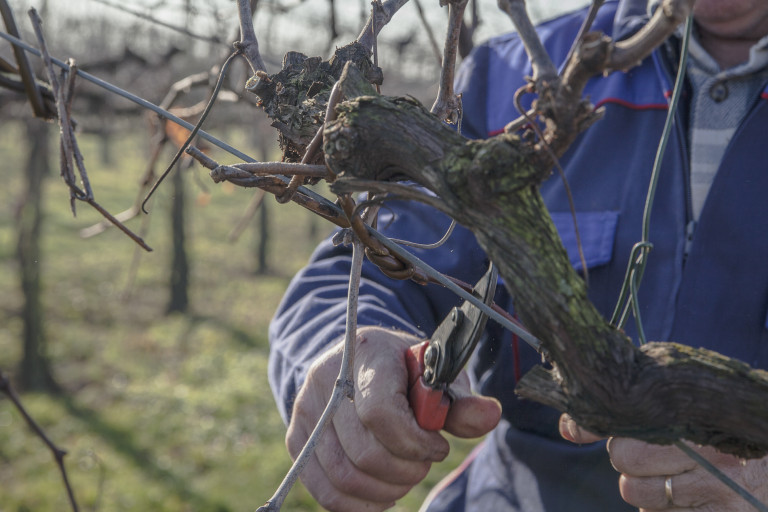
Wine is a product with many shades: in the quiet of winter two periods come full circle: the beginning and the end of a journey that unwinds as the year passes. During winter dormancy vines are pruned. That is the first step taken by man to foster bud breaking at springtime, as nature follows the rhythm generated by human work.

In the winery wine gets bottled after it is filtrated. That is the peak crucial moment that might put a smile on a face for a job well done that will produce a good vintage in the upcoming season.

In the vineyard our estate still keeps areas cultivated according to the Belussi method, a traditional winegrowing method that has been widely replaced by more modern ones. Until viticulture regulations allow us to use it, we’ll keep growing certain varieties of grapes with that method because we believe that it guarantees a better yield and a better quality wine. That method is predominantly manual, and it identifies our plantation, which is always tied to the territory and to the rural tradition of Treviso. We are attentive to constantly improve viticulture and, for new plants we have also introduced the methods Silvaux and Cordone speronato.

Always sensitive towards the environment, we opted for a path of sustainable agricultural practices, selecting and reducing treatments to a minimum, because that practice is the only that grants a future for our land. That process will grant our grapes to receive the organic certification and, in due time, it will allow to extend it to our wine.
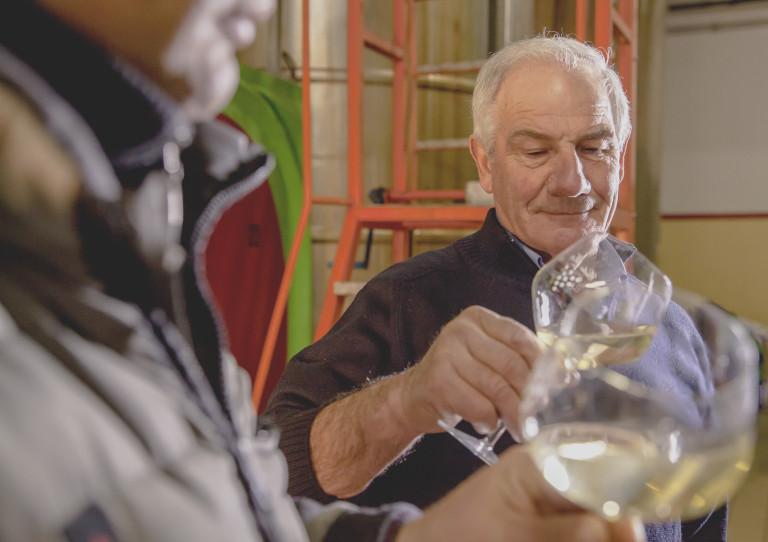
We believe that enologists must improve wine and not chemically alter what comes from the vineyard. We have been applying the sulfurization minimally, in accordance to the year of harvest, on a needed basis, and for the individual wine we are going to produce. Aiming at its quality, we are aware that we might face the eventual risks linked to the stabilization of wine. All in all our method remains natural, and the technology introduced serves only to reduce labor, without interfering with the nature of wine.
SPRING

Spring is the blooming season and is also the time when vines bloom. Strolling through the vineyard one notices new buds that will turn to grapes in summer. Pruning and tying during the dormant period in winter prepare the vine shoots ready to grow as the temperature and the daylight increase.
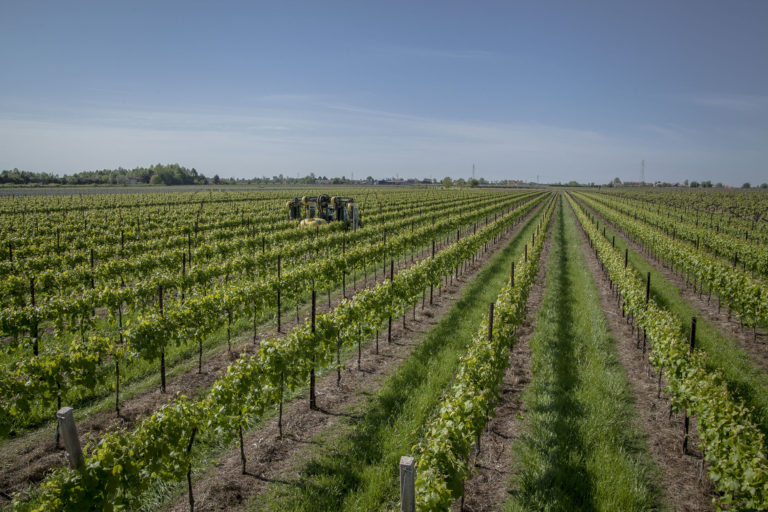
Springtime is also a delicate moment for climatic conditions. Humidity and warmth can promote fungi. It might seem a moment of rest, but the farmer must check daily the weather condition to decide if action must be taken. The elderly still brag about their ability to smell the air and realize if oidium is arriving. Today plants enjoy care that is the result of synergetic fusion of ancient knowledge and new technology.
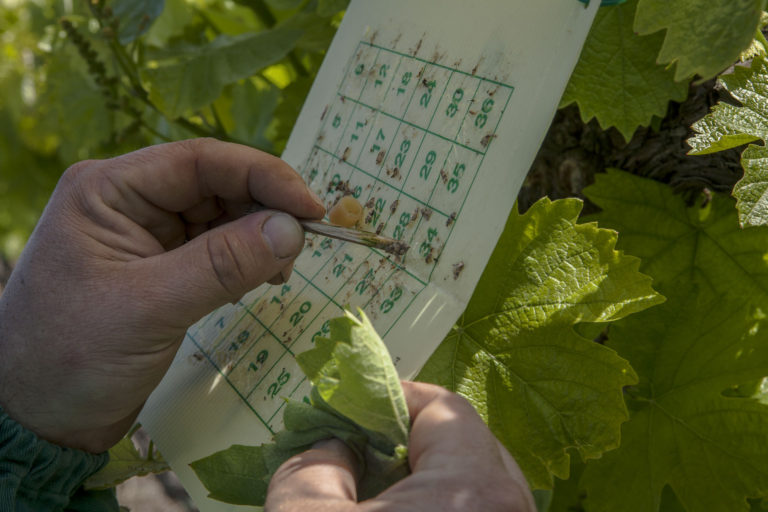
Spring awakening applies to pests as well. This is when the farmer tries to mend parasite attacks that would compromise the harvest. At Vigna Angri it has been years since they applied an integrated response, using strategic pheromones. Using special traps, they can monitor any proliferation of damaging insects and other pests and overcome it with a timing and ad hoc treatment.
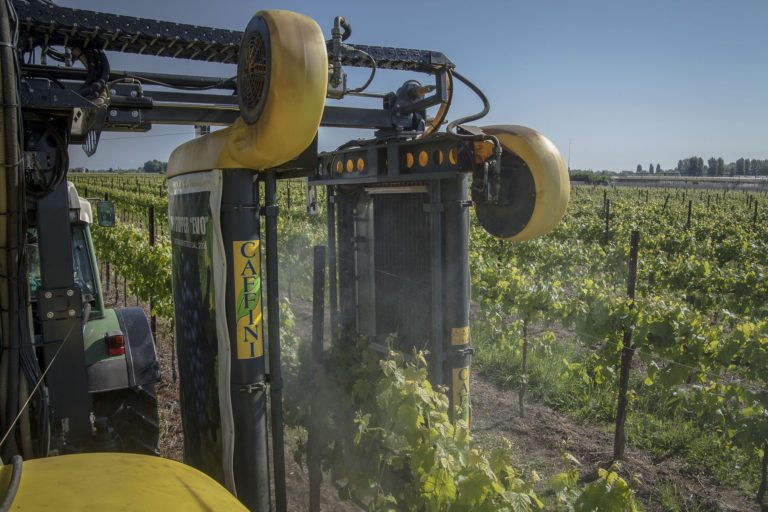
Used correctly, technology respects the environment. Vigna Angri is equipped with state of the art machinery which controls any risk derived by the use of phytosanitary treatments. Our goal is to reduce to the minimum any environmental impact, being self-conscious of the soil from which we make our living.
EARLY SUMMER

Summer days break up in the vineyard in the quiet of dawn. We always hope to have a season with the right abundance of sunshine, to develop the clusters and to slowly mature each single grape. Plants can thrive when the natural balance of humidity in the soil and in the air reaches the ideal point, when vines add sugar to the grapes to end the season with the right amount of sweetness for wine making.
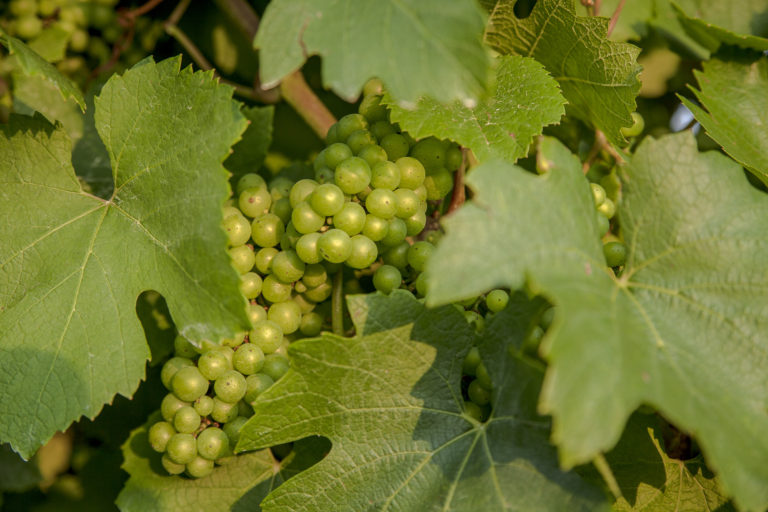
Starting on early morning, depending on the exposure of the vineyard, sunrays kiss the grapes, waking up the plants and putting in motion their metabolism.

The blooming phase is now over, and the bunches of grapes show their different shapes, according to their variety, sometimes they are plump and swollen, or they may develop into the classic conic shape; sometimes the grapes hang isolated on the vine, other times they appear clustered in bunches. A magic scenery along the rows or under the majestic vaulted lines of the Belussi implant.

Nature takes its course tended by the farmer, who intervenes only to correct imbalances, hoping to culminate the growing cycle without too many interferences, and to arrive at the grape-harvest time with a good yielding for quality and quantity.
THE HARVEST

When the September sun completes the last steps of the ripening process, everything is ready. According to the specific variety of grapes, the winemaker constantly checks his vine, day after day, he checks the weather forecasts, he tastes his grapes, he measures its sugar level, and takes responsibility whether to wait another day before starting the harvesting.

When the process is started, there is no time to waste. Each single step must be completed within a few days, and with the help of seasonal fruit pickers, the work thrives. In the following week it will already be time to harvest a different grape, which can no longer wait.

At Villa Angri the rite is mainly celebrated according to an ancient tradition, hand picking each bunch of grapes. Gently but firmly, hands move among the vine leaves and reach the grapes on the vines, cutting their stems with shears.

A full cycle of work is completed. Sun, water and soil managed to accomplish a miracle, under the guidance of the farmer, who tried to understand what nature offers, thus hoping to get a good harvest. Every night he gets back home, tired but satisfied for his share of load, leaving the completion of the miracle to the cellar. That is a step as delicate as the first part of the process, when fruits of the land get transformed into a magic beverage that we call wine.
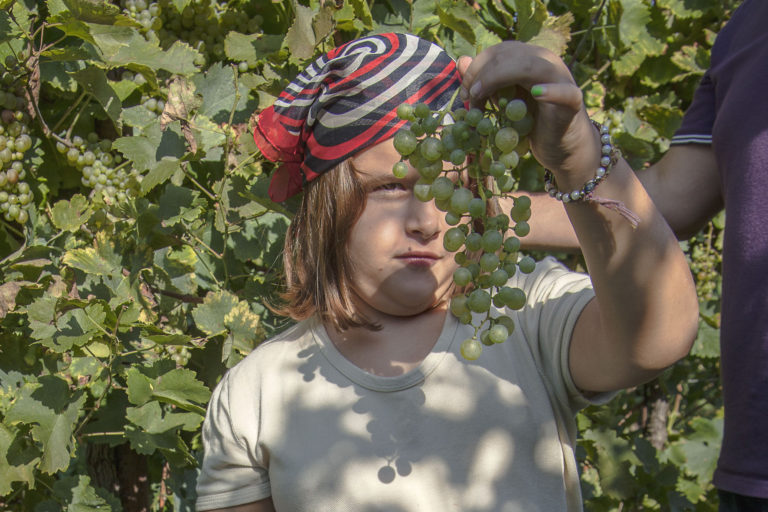
The yearly vine cycle is ended, ready to start again. That journey started in the quiet of Winter days travelled through the four seasons and lead us to renew our pledge with the land. Once again, a new vintage is in the making, in the cellar, the preparation for the new production is in full swing, while the previous vintages are ready to fill the glasses: “In vino veritas! E salute a tutti!” Cheers!
CONVIVIALITY

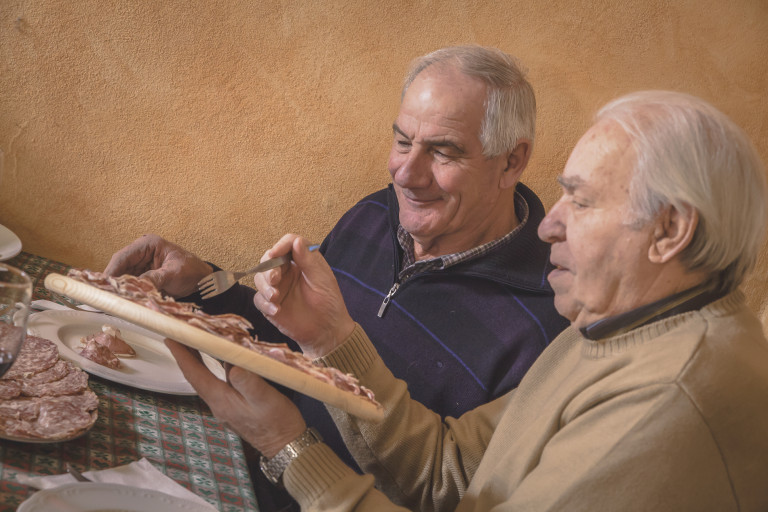
Our vision ties wine to conviviality, not just tied to the act of drinking, which in turn is often tied to the act of eating. Wine is a beverage that, consumed correctly, warms one’s hearth, brings cheerfulness and fosters human interaction.

Alongside a glass of wine, we share emotions, anecdotes, and ideas; sometimes new importance endeavors are born. Wine is used to celebrate anniversaries, and friendships; a toast can seal reconciliation.
Historically It was customary to buy a bottle of wine for the birth of a child, as a keepsake, only to be savored years later, to celebrate one of that child’s achievements: a degree, a wedding, a the starting of a new business...
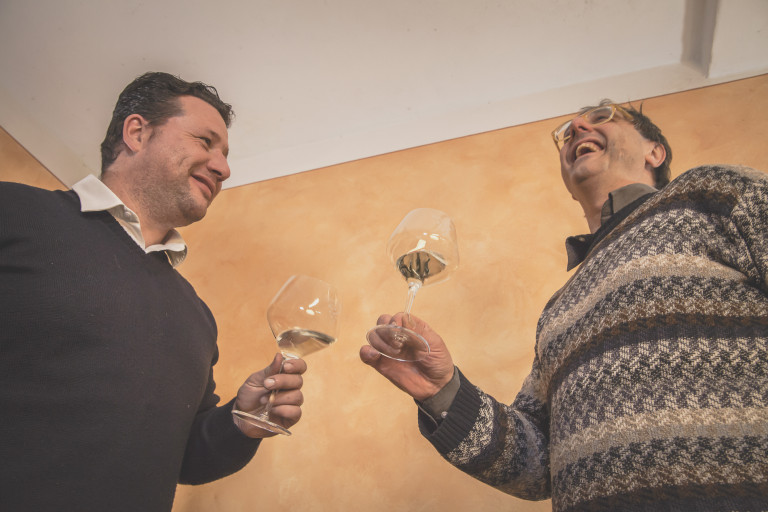
Others save an empty bottle on the mantel with the date of the event and the signatures of participants, as a personal memorabilia...
Anyway, with a piece of bread, a slice of salami or a sliver of cheese, a bottle of wine always offers the spontaneity to celebrate with family or friends, young and old, a happy moment, away from the daily routine.
